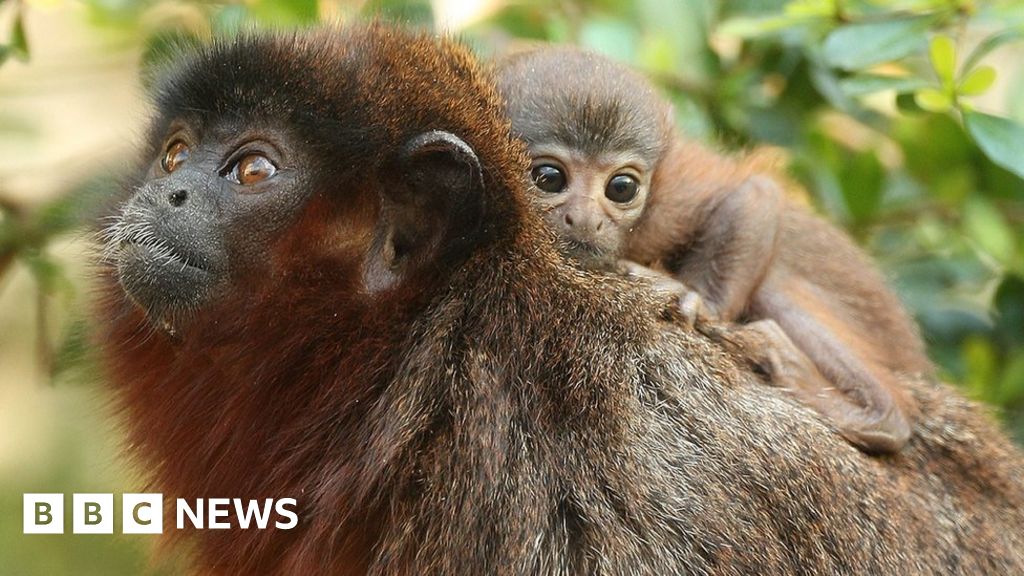
[ad_1]

Image copyright
Getty Images
The monkey, called the xenothrix, was closely related to the titi monkey which lives in the Amazon
A mysterious extinct monkey from Jamaica that is unlike any other in the fossil record has South American roots, according to new evidence.
DNA extracted from fossilised bones suggests the monkey first colonised the island 11 million years ago.
It had no predators there and it evolved strange features not seen in living monkeys today.
But the animal went extinct a few hundred years ago, likely due to hunting and habitat loss.
Scientists say the discovery highlights how vulnerable unique island animals are to extinction.
“It was a really weird animal indeed,” Prof Samuel Turvey from international conservation charity, Zoological Society of London (ZSL), told BBC News.
“Possibly with legs like a rodent; body maybe like a slow loris. Because it’s so weird no-one’s been able to agree what it was related to.”
Image copyright
Lorraine Meeker (American Museum
A xenothrix skull
The researchers extracted ancient DNA from the fossilised cave bones of the Jamaican monkey, Xenothrix mcgregori.
DNA evidence shows it was a type of titi monkey with some unusual morphological features, not a wholly distinct branch of evolution.
“Evolution can act in unexpected ways in island environments, producing miniature elephants, gigantic birds, and sloth-like primates,” said Dr Ross MacPhee of the American Museum of Natural History.
More stories you might like:
Titi monkeys are small tree-dwelling animals found across tropical South America, with long soft red, brown, grey or black fur.
They are active during the day, and very vocal, with an elaborate system of communication.
Xenothrix’s ancestors likely reached Jamaica from South America after being stranded on natural rafts of vegetation that were washed out of the mouths of rivers.
Image copyright
Getty Images
Living titi monkeys are small tree-dwelling monkeys found across tropical South America
Other animals, such as large rodents called hutias, that still survive on some Caribbean islands, probably arrived in the same way.
The islands of the Caribbean have been home to some of the most unusual species to have ever walked the Earth.
The region has also experienced a very high rate of mammal extinction, likely caused by hunting and habitat loss by humans, and hunting by animals brought in by early settlers.
The research, published in the PNAS journal, also reveals that monkeys must have colonised the Caribbean islands more than once.
[ad_2]
Source link